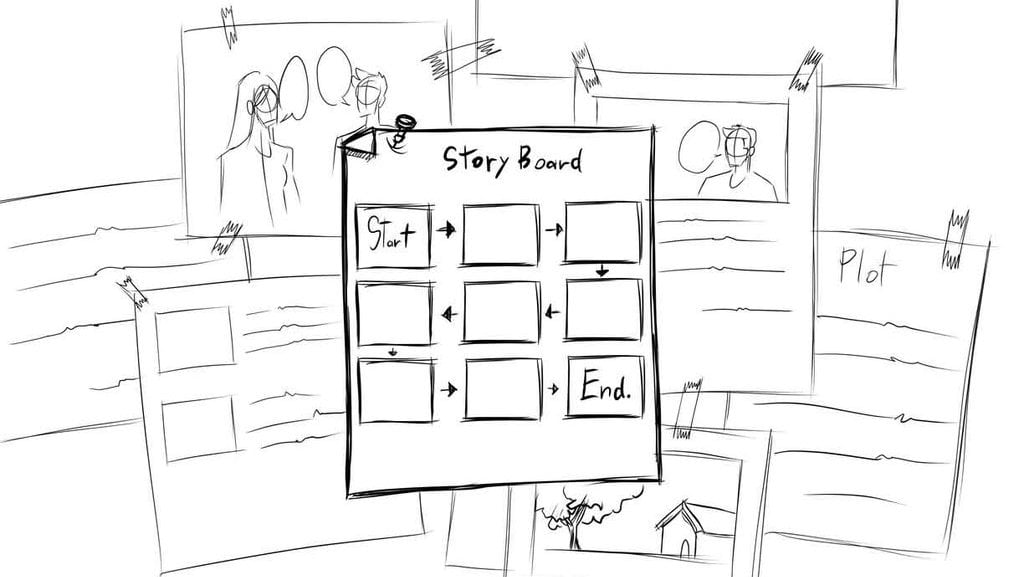
Storyboarding is a critical step in the production of both films and animations. It serves as a blueprint for the entire visual narrative, offering a clear guide to how the story will unfold on screen. Whether it’s a live-action film, an animated feature, or even a commercial, the storyboard provides the visual roadmap that ensures the final product is cohesive, effective, and visually engaging. This article explores the reasons why storyboarding is so crucial in the production process and how it enhances the efficiency and creativity of a project.
- Visualizing the Story
One of the primary purposes of a storyboard is to visualize the story before actual production begins. It takes the script or the concept and turns it into a sequence of images that show how each scene will look. Storyboards help filmmakers and animators map out the visual flow of the story, highlighting key moments, character actions, and camera angles. This visualization allows everyone involved in the project to understand how the narrative will unfold, making it easier to plan the entire production.
By breaking down the script into individual scenes and shots, a storyboard gives a detailed preview of the entire production, ensuring that the director’s vision is clear from the outset. Whether for a dramatic sequence or a humorous moment, storyboards provide a way to experiment with the pacing and visual style of the project.
- Prevents Wasted Time and Resources
Without a storyboard, a production team might face confusion during filming or animating, leading to unnecessary revisions, reshoots, or rework. Storyboarding helps to minimize these risks by providing a clear plan for what needs to be done in each scene. For example, an animator can work from the storyboard to create accurate animations based on the planned keyframes and transitions. Similarly, a film crew can use the storyboard to set up shots in advance, ensuring that the set, lighting, and camera angles are all aligned with the director’s vision.
This level of preparation saves time on set or during animation production, as the team already knows the layout of the scenes and the specific actions to capture. It also helps reduce the chances of overlooking critical details, such as the positioning of characters or props in a frame.
- Enhances Communication Among Team Members
A storyboard is a common reference point for everyone working on the project, from the director and producer to the cinematographer, animators, and special effects artists. Having a visual guide ensures that all team members are on the same page and understand the creative direction of the project. For example, if an animator is working on a sequence of actions for a character, they can refer to the storyboard to match the timing and movement of the character with what was envisioned in the initial planning.
Furthermore, the storyboard helps bridge any communication gaps between different departments. The director can explain complex ideas visually, making it easier for everyone to understand the intended result. In animation, where timing and movement are crucial, a storyboard provides a guide that helps the animators bring the vision to life with precision.
- Refining and Experimenting with Ideas
Storyboards offer the opportunity to experiment with different ideas and approaches without committing to expensive or time-consuming production work. If something isn’t working in the storyboard, changes can be made relatively quickly, saving both time and money. For example, the director may decide to change a scene’s camera angle or adjust the pacing of a sequence. These changes can be easily reflected in the storyboard without requiring major revisions to the entire production.
This flexibility allows the team to refine their ideas and experiment with different approaches to the visual storytelling process. For instance, an animator may try various visual effects, transitions, or movements before settling on the best one, all while using the storyboard as the guide.
- Establishing the Visual Style and Tone
Storyboards are an essential tool in setting the tone and visual style of a project. The choice of camera angles, framing, lighting, and even character design in the storyboard all contribute to establishing the overall look and feel of the production. For example, a storyboard can convey whether the film or animation is going for a dark and moody atmosphere or a bright, whimsical style.
In animation, storyboards are especially important in defining the character design, movement, and interactions with the environment. Animators can decide on the pacing and expression of characters, ensuring that these elements align with the intended tone of the story.
- Helping with Budgeting and Scheduling
In addition to their creative function, storyboards are also valuable tools for budgeting and scheduling the production. By outlining each scene’s shots and actions, the storyboard helps the production team estimate how long each scene will take to film or animate. This allows for a more accurate breakdown of the time and resources needed for each phase of production, making it easier to allocate budget effectively.
For live-action films, the storyboard helps the production team organize the shooting schedule, ensuring that scenes shot in similar locations or requiring similar setups can be filmed together, optimizing time and resources. In animation, the storyboard helps in organizing the workload for each animator and effects artist, keeping the project on track.
- Making the Pitch Stronger
Storyboards are also powerful tools for pitching an idea or project to producers, investors, or clients. A storyboard provides a visual representation of the project, which makes it easier for stakeholders to understand the concept and get excited about the project. Instead of relying solely on a script or verbal description, a storyboard showcases how the project will look on screen, adding depth to the pitch.
When presenting a storyboard, creators can convey complex ideas quickly and effectively, often resulting in better support and funding for the project.
